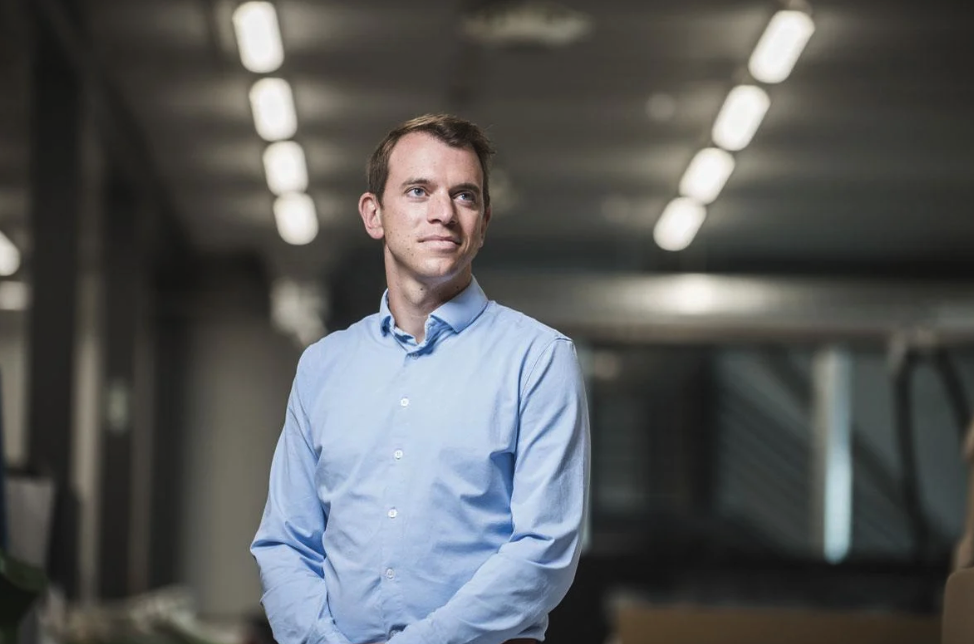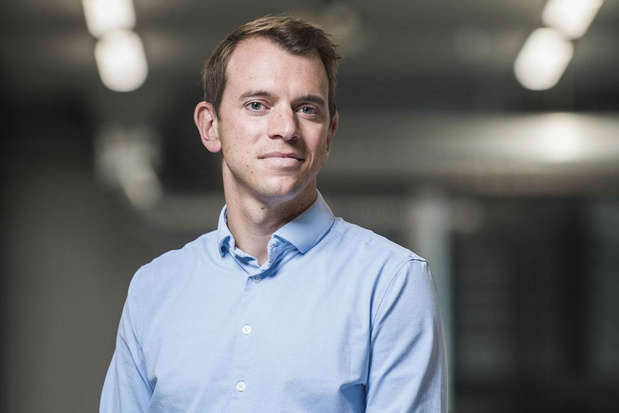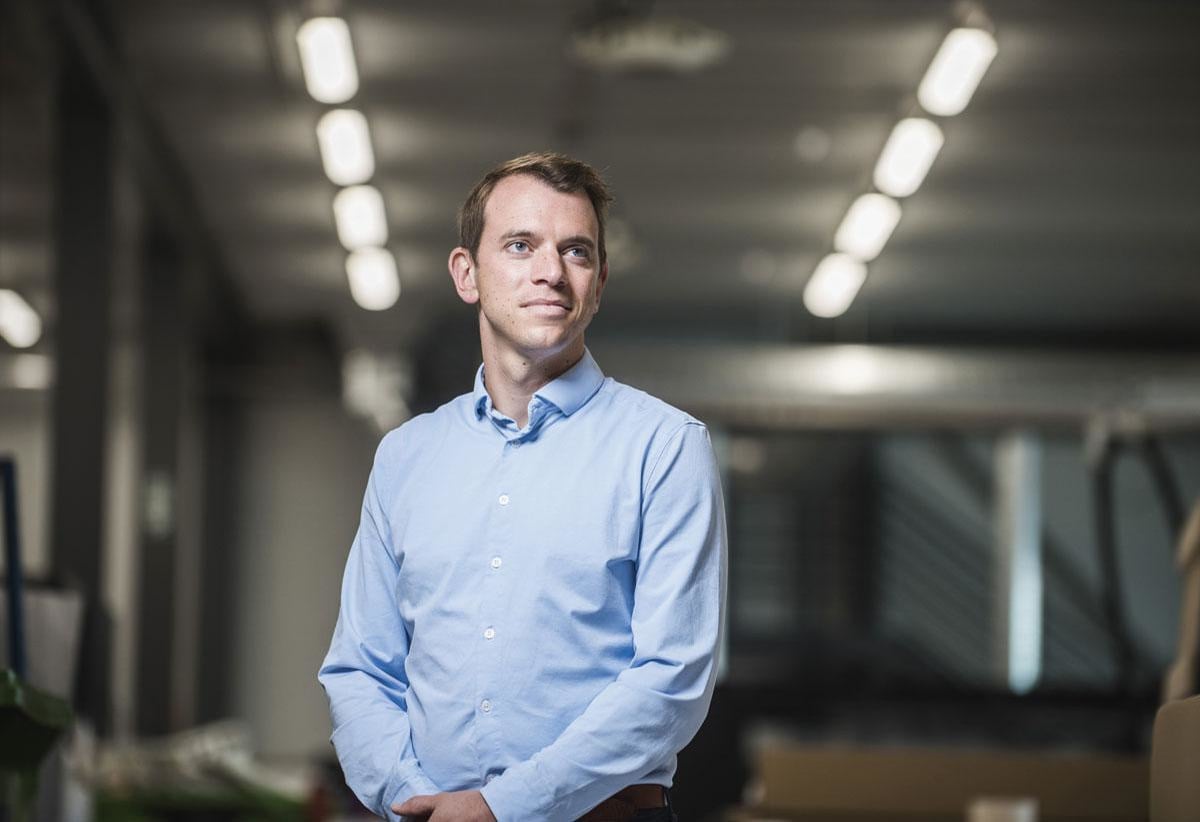
26 Aug ‘Sometimes transparency is hard, but we have no secrets’ – Trends (Aug ’21)
According to Thijs Claes, the CEO of Daddy Kate and a member of the second generation of the family business, acquisitions are the only way to grow structurally. His direct hr approach, radical transparency and participative collaboration model lead to engaged employees.

Daddy Kate was founded in 1978 by father Claes, who grew the printing company into a thriving business. His two daughters joined the business in 2006 and wanted to take over after three years. Son Thijs Claes was not interested and had not set foot in the print shop for ten years. “I am a Germanist-philosopher by training and taught,” he says. “My mother convinced me to give it a chance for a year so that I would understand what it was about. I thought that was a fair proposal.” He started in 2009 and, he says, was lucky when the financial crisis was in full swing. “The company was in dire straits. Sales at many customers were down to 30 per cent and my father no longer had the energy he used to have. Everything was much less under control than I thought, and I saw it as a great challenge.”
“Our employees decide who becomes the team leader and who gets to represent them on the management team”
Thijs Claes stayed on board and became the CEO in 2013. The printing company works for retailers, communication and event agencies and large associations. Its offering includes classic offset printing, as well as personalised digital printing and outdoor printing. With 100 employees in Belgium and 25 in France, the print shop realised a turnover of EUR 23 million last year. Over the past two years, Daddy Kate acquired four industry peers. “For a company of our size, this is the only way to grow structurally,” explains Thijs Claes. “The market has shrunk by 40 per cent in the last 10 years because certain communications that used to be on paper are now digital. Those turnovers are not coming back.”

Radical transparency
Daddy Kate therefore chose the strategy of customer intimacy. Above all, it looks for customers who want service and added value. It does not necessarily look for the lowest price, but a solution to a need. “This is in contrast to printing companies that focus on automation, process improvement and cost reductions. Due to the shrinking market, it makes sense to produce as efficiently as possible – we do – but it does not always deliver the best possible solution for the customer.” Thijs Claes sees only advantages of such a clear strategy. “Sometimes it is difficult to say goodbye to customers who are only interested in a low price. In recent years, we have deliberately closed some 3-4 million euros of sales, and replaced them with new customers who fit perfectly into our strategy.”
This commitment to customers is also reflected in the name Daddy Kate. “In 2015, the print shop consisted of an amalgam of 10 companies. We wanted a new name that was no longer linked to our family name or that featured print, print or graphic. When someone came up with the idea of Daddy Kate, all the pieces of the puzzle fell into place. The name is both masculine and feminine, ‘daddy’ refers to the family business, it is playful which makes it stick, and it symbolises our strategy of customer intimacy.”
Thijs Claes also has a clear strategy in hr. He is a supporter of the participative collaboration model, inspired by Brazilian businessman Ricardo Semler, for whom engaged employees are the foundation of any successful company. “Semler also belongs to the second generation and has thoroughly reshaped his father’s company. His principles are easy to apply because you move away from certain structures and processes that do not lead to efficiency anyway. The big step in this is transparency. If you are transparent about everything, you no longer need to maintain many processes. Everyone is in the loop. You lose less time on political games.”
Profit sharing
US investor Ray Dalio’s plea for radical transparency in the workplace influenced Thijs Claes’ view of management. Every month, he makes a 15-minute video on results and shares it with all employees. “That way, they know how the company is doing financially, which important customers have added or dropped. By sharing information, employees are more engaged and question why the previous month was good or bad. At the end of the year, we share 20 per cent of our profits equally among all employees.” Besides the results, the company also shares the minutes of all meetings. “Sometimes this transparency is hard and direct, but we have no secrets from each other.”
“On an individual level, we may sometimes be weaker because we don’t look for higher profiles, but collectively we are much stronger”
Employees not only share in the profits, but are also involved in important investments and decisions. “When we invest in machinery, we are soon talking about a million euros or more. Therefore, we want the employees to be behind the investments so that the machines can pay off to their full potential. In many companies, the CEO, the purchasing manager and an expert go on site to tie the knot. We involve the whole team in the purchasing process. Just recently, we went to the Netherlands with 12 employees to see if it was a suitable machine.”
Experience
“We have divided our company into 12 teams and are experimenting with them,” says Claes. “Some teams are already further along than others. If an experiment is successful, we copy it with the other teams.” One successful experiment was appointing management from the bottom up. “Our employees decide who will be the team leader and who can represent them in the management team,” he explains. “That’s how you get a different dynamic. Employees come up who you wouldn’t expect at all in a traditional management team. On an individual level, we might sometimes be weaker because we don’t look for higher profiles, but collectively we are much stronger.”
Sooner or later, won’t the company have too few level managers? “Maybe at some point we will lack experts. We will then write vacancies for that, but they will not necessarily become team leaders. Daring to let go of that is important. We don’t try to prevent the problem or adjust in advance, but let it happen and then try to solve it, believing that we will learn much more from it.”
Daddy Kate wants to remain an independent family business. “We hang everything on that coat rack,” says Thijs Claes. “We don’t want an investment company or industry peer to take us over. Even though I am only 37, we are preparing for the third generation. It is our duty to pass on this company and our knowledge. Everything we decide should result in us being a stronger company than we were yesterday. The more autonomously employees make decisions, the more involved they are and the more they feel an ownership of the company. This makes the company stronger and ensures our long-term vision. That is our main driver: that the company becomes stronger, preserves its individuality and thus continues to exist.”




Sorry, the comment form is closed at this time.